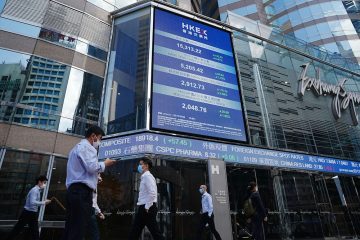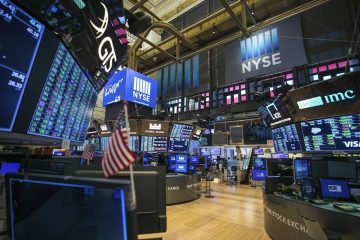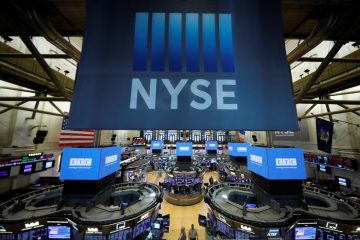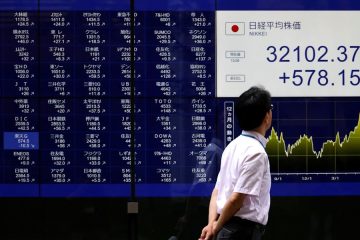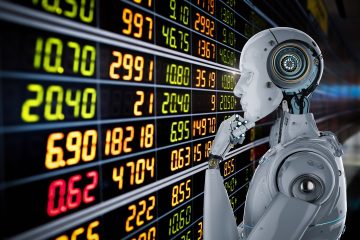Rate rises affect global markets—and may feed back to America
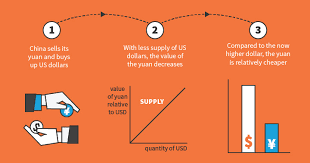
ON JUNE 13th the Federal Reserve raised its benchmark interest rate by a quarter of a percentage point, the seventh such increase since it began shouldering rates away from zero in December 2015. Markets shrugged—a rather different reaction from the one that followed a policy adjustment made five years ago this month. The chairman then, Ben Bernanke, dared advise investors that the Fed might soon start winding down its stimulative bond-purchases. Traders fell to their fainting couches, but not before pausing to sell. Yields on ten-year Treasury bonds leapt. Currencies around the world flopped. This “taper tantrum”, as it became known, raised concerns that Fed tightening might so perturb global markets that America itself could suffer. Having survived both tapering and rate increases, Fed officials now seem inclined to dismiss such worries. They should not. The danger of a nasty Fed feedback loop remains.
Wise central bankers are prepared for ill winds blowing from abroad. Thanks to global financial integration, these have strengthened in recent decades. The ratio of assets held across borders to world GDP has roughly tripled since 1995. In the same period market movements have become more closely aligned internationally. According to a new working paper by Òscar Jordà, Moritz Schularick, Alan Taylor and Felix Ward, this co-movement has reached levels unseen for at least 130 years—surpassing the highs of the early 20th century. Correlations are particularly high across equity markets (see chart), a trend the authors believe is driven by shared fluctuations in the appetite for risk. So, as even the most casual observers can see, bad days for Asian shares are usually accompanied by ugly ones in Europe and America.
America’s financial power means it is responsible for a disproportionate amount of shared trouble. The vast majority of trade is invoiced in dollars. Dollar-denominated assets account for two-thirds of global foreign-exchange reserves, with Treasury bonds making up the bulk. America’s banks play a crucial role in global financial intermediation, helping to propagate changes in sentiment around the world. Foreign banks hold lots of American assets. Shifts in their value affect the banks’ capital-adequacy ratios, pushing them to adjust their risk posture.
Thus the world cannot help but sway to the Fed’s tunes. Messrs Jordà et al reckon that American monetary policy is increasingly important in driving global risk appetites. Their work echoes that of Silvia Miranda-Agrippino and Hélène Rey, who write that the price of risky assets around the world, credit growth and other variables are influenced in large part by the Fed. Indeed, Ms Rey has argued that countries which open themselves to global capital flows necessarily sacrifice some monetary-policy independence (in effect, to the Fed). Flexible-exchange rates seem to dampen but not eliminate these effects.
The Fed cannot prioritise economic conditions abroad over domestic priorities and hope to stay politically independent. Yet what goes around may also come around, to affect the American economy. Changes in global risk sentiment prompted by Fed tightening can reduce the price of assets held by Americans as well as the prospects and share prices of American multinationals, amplifying the effect of the initial change in policy. This loop, evident during the taper tantrum, kicked in again as the Fed prepared to begin raising interest rates in 2015. Lael Brainard, a Fed governor, warned of such feedback effects shortly before rate increases began, noting that expected tightening pushed the dollar up and led to straitened financial-market conditions, imposing a “material restraint” on American growth even before the first bump in rates.
Ultimately the Fed raised rates only twice by the end of 2016, rather than the five times widely foreseen in mid-2015. But as rates have gone up, worries about feedback have since subsided. In May Jerome Powell, now the Fed’s chairman, noted that while global financial conditions affect the American economy, the role of American monetary policy in driving them is “exaggerated”. Ms Brainard herself reckons that the risks of feedback are lower than they were. Markets are more likely to be wrong-footed by announcements about unprecedented asset-purchase programmes than by garden-variety interest-rate tweaks, she has noted. And when rates are above zero, the Fed has more room to react to a policy miscalculation. What is more, the American economy seems as hale as ever. Job growth looks imperturbable. The gut-wrenching surge in Treasury yields of 2013 fizzled out; indeed, the yield on ten-year bonds is still a shade lower than at the end of that year.
Careful now
But the world economy is no less integrated or dollar-dependent than it was a decade ago. And the winds may be shifting. Global growth looks likely to slow. Emerging markets are feeling the heat from a rising dollar. Credit growth seems to have levelled off. Most important, the world economy is no more ready for a financial storm than it was during the taper tantrum, or when Ms Brainard sounded her alarm. Interest rates across much of the world remain close to zero, and asset-purchase plans could prove politically difficult to expand—particularly in Europe. Debt loads in much of the world are higher than in 2013, leaving households more vulnerable to tighter credit conditions and governments less able to spend flagging economies to safety. Political systems are under strain. As the rancour at the G7 suggests, the scope for international co-operation in a crisis has surely diminished.
Against all that, the cushion between the Fed’s benchmark rate and zero, at less than two percentage points, is thin indeed. The Fed is understandably keen to increase it while markets look resilient. Yet it should take care, especially with the pace of rate increases. Feedback from global markets may be subdued for now. But that doesn’t mean America’s monetary policymakers should take it for granted.
This article appeared in the Finance and economics section of the print edition under the headline “What goes around”
